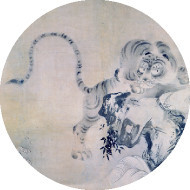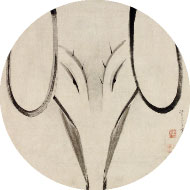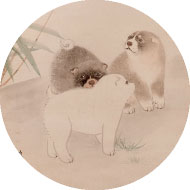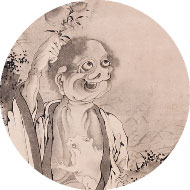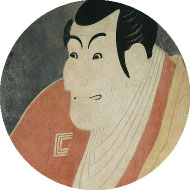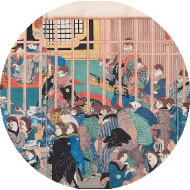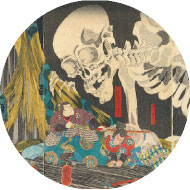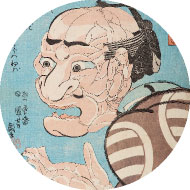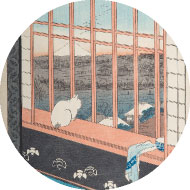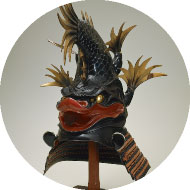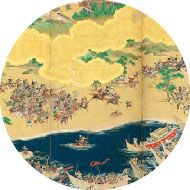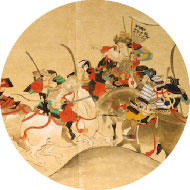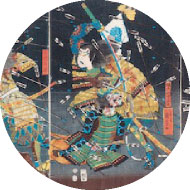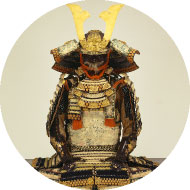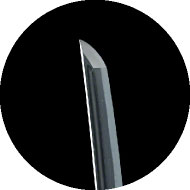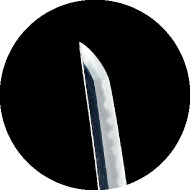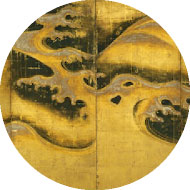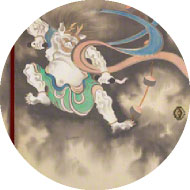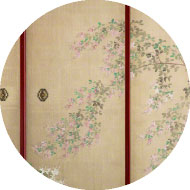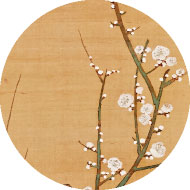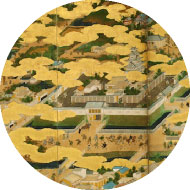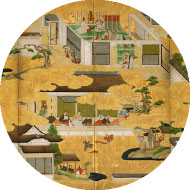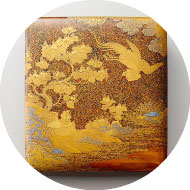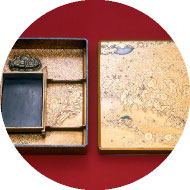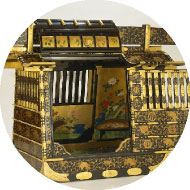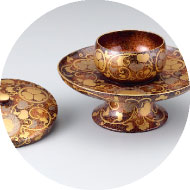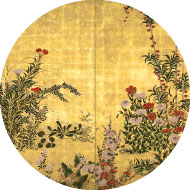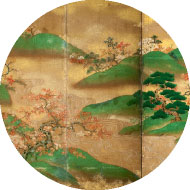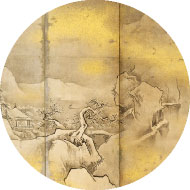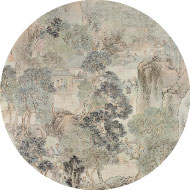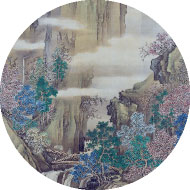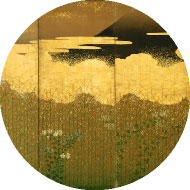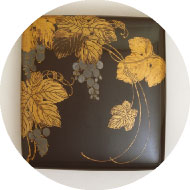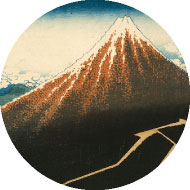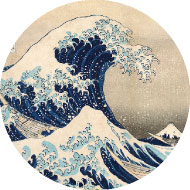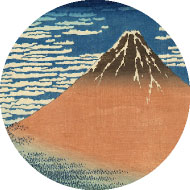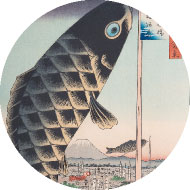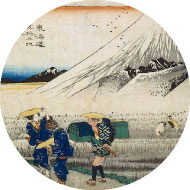This exhibition will be held to commemorate the 25th General Conference in Kyoto of the International Conference of Museums. The exhibition includes masterpieces of Japanese art meticulously selected from 30,000 works in the Tokyo Fuji Art Museum (TFAM) collection. Drawing on our collection of Japanese fine art ranges from works created during the Heian Period (794-1185) to the modern and contemporary eras, the TFAM exhibition enables viewers to engage in and enjoy the quinessential aesthetic of Japanese culture lovingly spawned over a millennium. And in order to make the experience even more tangible, we have categorized our presentation based on such key words in Japanese art as samurai, design, gold, four seasons, Mt. Fuji and even kawaii [cute]. The exhibition also incorporates the latest in virtual-reality (VR) technology. One station, for instance, displays a katana sword in a specially designed case that provides visitors with a simulated experience of grasping the piece with his or her own hand. Another VR attraction, moreover, enables people to marvel at a golden folding screen illuminated by candlelight, which was how art afficionados appreciated the work during the Edo Period centuries ago, making for museum-going experience that is as unique as it is immersive. It is this fascinating combination—fusing some 40 of the finest paintings, Ukiyoe prints, lacquer wear, swords and armor with high-tech display systems—that make “This Is Japan In Kyoto” an extraordinary opportunity to not only interact with and learn about a broad spectrum of Japanese art and history, but also thoroughly enjoy their riches.
"Kawaii" Japan
Motifs in Japanese art often appear very cute from our contemporary point of view. For instance, Maruyama Okyo’s puppies and Nagasawa Rosetsu’s rabbits spark the cuteness that attracts us with their adorable appearance. On the other hand, Soga Shohaku’s saga or Toshusai Sharaku’s figures can be characterized by eccentric distortion, which may give the viewers an impression of ‘creepy cute,’ a kind of cute where the creepiness or weirdness of the motif ultimately makes it somewhat cute. Latent ambiguity attached to the sense of ‘cute’ and ‘creepy cute’ can be a characteristic of Japanese art.
Samurai Japan
Warriors in the war painting on picture scrolls or folding screens wear armor and weapons and show their strong presence as a main actor of war paintings unique to Japan. The weapons and armor used to be practical items for warriors but are now appreciated as artwork. The remains of the warriors that we see today are lavishly produced masterpieces reflecting the passion and aesthetics of the warriors, unlike the practical items that were largely consumed and lost in the battles. Please enjoy the beauty of the items—especially the swords—in the way that the warriors enjoyed it in their hands.
"Rinpa" Design Japan
The Rinpa school was founded by Tawaraya Sotatsu, further developed by Ogata Korin, and passed down to Sakai Hoitsu and Suzuki Kiitsu. Without being limited to the direct master-disciple relationship, their activities went beyond the existing idea of the school, and thus continued throughout the Edo period, extended from Kyoto to Edo, and crossed the boundaries of painting and crafts. Wind God and Thunder God was an important subject tackled by Rinpa masters, Sotatsu, Korin, Hoitsu, and Kiitsu. While the three masters depicted the two gods in a pair of two-folded screens, Kiitsu made a bold attempt to paint each on the front and the back of a large space using four sliding doors. Their strength lays in their ability to create unique figures = design that originates from their unconventional sense of imagination.
Gold Japan
It seems that the gold color somewhat represents Japanese art to many people, as represented in the gold folding screens using gold leaves and paints in the field of painting, and maki-e lacquer with abundant use of gold in crafts. Since ancient times, the charm of gold has fascinated the heart of the Japanese and was used extensively since the Kamakura Period in the art and crafts works that decorated the lives of noble people and warriors. This section allows viewers to enjoy the paintings under the candle light used around the time the folding screens were created and feel the effect of the shiny gold created by reflecting the room light.
Four Seasons Japan
Expression of seasons occupy a large part when thinking of the history of Japanese art and its scope. Since as old as the Heian Period, depicting seasons was a popular practice when painting nature. It became a standard, especially in the large folding screens, to depict spring and summer on the right and autumn and winter on the left in a pair of six folding screens. Seasons were a popular theme among the people from the noble class and warriors to the mass and across various genres including painting and crafts. The expression of seasons deploys animals and plants, as well as landscapes that represent seasons, and influences of Chinese paintings can be seen in the development of painting styles.
Mt. Fuji Japan
Mt. Fuji has attracted people since ancient times due to its sublime existence. It appears quite often in Japanese art, including the painting of famous places or for the purposes of the animistic worship of Mt. Fuji. In the late Edo period, two publications featuring Mt. Fuji became a big hit: one was Thirty-six Views of Mount Fuji by Katsushika Hokusai that applied a bold composition and a method of perspective, and another was Fifty-three Stations on the Tokaido by Utagawa Hiroshige that was based on on-site sketches from his trip to various countries. Hokusai’s Fine Breezy Day with summer Red Fuji, Shower Below the Summit, and The Great Wave off Kanagawa with Mt. Fuji appearing through big waves can especially be seen as masterpieces that represent Japan.
ABOUT
This Is Japan In Kyoto From The Tokyo Fuji Art Museum Collection
Exhibition Dates
Sunday, August 25 – Sunday, September 29, 2019
Exhibition Hours
10:00 a.m. – 6:00 p.m.
*Open until 7:30 p.m. on Fridays (Last entry is thirty minutes before each closing time)
Closed
Closed on Mondays, except on national holidays, when closed on following Tuesday; Temporarily open on Monday, September 2
Sponsored
The Museum of Kyoto, The Kyoto Shimbun, Television Osaka, Inc.
Co-sponsored
City of Kyoto
Planning and Cooperation
Tokyo Fuji Art Museum
Admission Fee
Adult 1,200 yen (1,000 yen)
University Students and High School Students 800 yen (600 yen)
Junior High School Students and Elementary School Students 400 yen (300 yen)
Preschool children Admission Free
*Prices shown in ( ) indicate group (more than 20 persons) and advance discount tickets.
*Tickets are available at The Museum of Kyoto, Lawson Ticket(L-Code 52245) and ticket agencies
*Advance tickets are on sale till August 24.
*Persons with disabilities are admitted free without accompanying person each. Please present Disabled Person’s Notebook or similar identification.
ACCESS MAP
Tokyo Fuji Art Museum
Tokyo Fuji Art Museum (TFAM) was founded in 1983. The TFAM collection is comprised of some 30,000 Japanese, Eastern and Western artworks, ranging from paintings, prints, photography, sculptures, ceramics and lacquer ware to armor, swords and medallions of various periods and cultures. Especially noteworthy is its outstanding collection of Western oil paintings that spans a five-hundred-year period from the Renaissance to the Baroque and postmodernist eras, as well as its exceptional collection of photographic masterpieces.Based on the motto, “A museum creating bridges around the world,” TFAM sponsors exhibitions promoting cultural exchange that bring the finest artistic treasures of the world to Japan.

